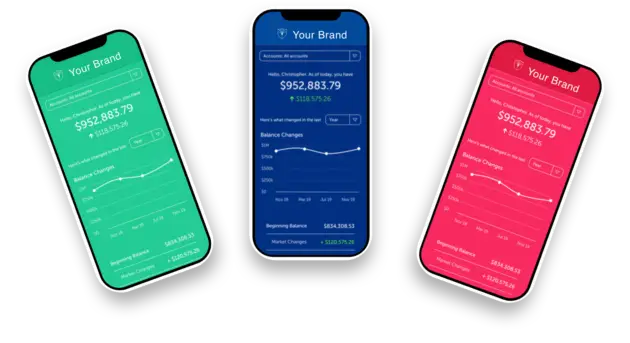Last Updated on September 6, 2022 by Connor Prendergast
Clients in the digital age have more choices when it comes to financial services. Market research and investment trends are available on Google and Yahoo Finance. Robo-advisors are plentiful and cheap to use. Trading platforms like Robinhood are open to everyone.
This is what financial advisors are up against. Client expectations are high because they know there are other options available. The only way to retain their business is to consistently demonstrate your value. In today’s article, we’ll go over some of the ways to do that.
Communicate with Clients when Making Investment Decisions
This is a common theme in our content here at Blueleaf. Transparency and frequent communication with clients are essential for success in the digital age. Advisors are frequently questioned about their decisions. It’s important that clients know why you make them.
A good example of this is the selection of model portfolios. Analyzing risk and suggesting a moderate or aggressive approach is a good first step, but it doesn’t paint a clear picture of how it lines up with what the client wants.
Do they want to take an ESG approach? Are they still all-in on fossil fuels? Should you include FAANG stocks in their portfolio? Work to understand clients’ specific desires and then connect your own strategies to them. You may even want to incorporate some of the themes you hear from clients into your model portfolios.
The next step is to accurately report on those investment models using allocation descriptions that speak to your clients in the same language you do. If you’re not using the terms “growth” and “value” in your verbal conversations, don’t include them on performance reports.
When clients understand your investment strategy, their expectations in that area will be met. Taking the time to explain the who, what, and why of your decisions helps them to build confidence in your abilities. Ask questions and use simple reporting to provide updates.
Simplify Your Communication
Speak to your clients in a language they understand, and make each conversation interactive, not one-way. Practice active listening. Their opinions are valuable. If you disagree with them, explain why, but remember that it’s their money being invested, not yours.
One of the biggest expectations that clients have centers around trust in their advisor. If they can’t understand what you’re talking about, how can they trust you?
Probing for feedback in client meetings will tell you if you’re connecting or not. Add that to your toolbox.
This concept flows through to your performance reporting. Remember those fifty-page quarterly reports that break down Alpha, Beta, and Delta? Most of your clients have no clue what that means. They read the cover page and throw the rest in a drawer.
Simplify and automate your reporting. Use terminology that clients understand and give them the answers they’re looking for, without all the extras that demonstrate your extensive financial knowledge. Clients don’t care about that. They just want to know if they made or lost money.

Check out MyAdvisor by Blueleaf
A powerful client mobile app with a personal touch.
Teach Clients How to Talk to You
This is an often-overlooked exercise that leads to communication breakdowns. Advisors need to teach their clients how to express their expectations. It’s best to set the groundwork for this in the very first client meeting. In other words, ask them exactly what they want.
An initial client meeting should never be a sales pitch. There are reasons why this client sought you out. For the purposes of building a healthy relationship, you need to know what those reasons are. How do you find that out? You have a conversation with them.
As time goes by, expectations and life goals change. If the advisor and the client have become comfortable communicating their wishes, this is not a problem. Those changes will come up in a meeting or on a phone call. If that doesn’t happen, the two parties will grow apart.
Clearly Define Roles And Expectations
Advisors can share information and allow their clients to make certain decisions, but their role should be clearly defined. Yours is the knowledge that’s relied upon to drive the investment strategy. Make sure you’re viewed from that perspective.
Never let the client run the show. Include them in the conversation, make sure you understand their wishes and expectations, and accurately report results. Don’t let them dictate trades or second-guess your decisions. You’re getting paid to do that for them.
We live in a different world than we did just a few short years ago. Clients are savvier. Technology is better. Advisors need to be more proactive. Despite all that, the key to success is still the advisor/client relationship. Make sure yours is what it should be.



